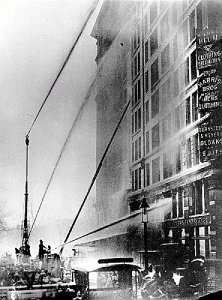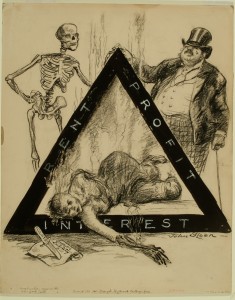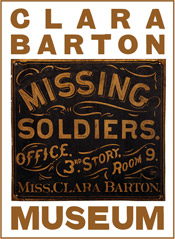Triangle Shirtwaist Factory Fire
The entire neighborhood is sitting shiva. Every heart is torn in mourning. The human heart is drowning in tears. What a catastrophe! What a dark misfortune!
The depth of the pain, the bitter ripping of the heart, for the first time the soul is overflowing such that it’s impossible to form thoughts about the event. There’s no room in the heart for anything but sadness.[1]
Thus began an editorial in the Jewish Daily Forward (The Forvart) published March 27, 1911. One hundred and five years later, the author’s words could be used to describe a myriad of events. However, that fateful week in 1911, there was no question what he was discussing: the Triangle Shirtwaist Fire.
On March 25th 1911, the girls of New York’s predominantly immigrant Lower East Side headed off to work like any other day. They walked to garment factories in Manhattan where they would work thirteen hour days for thirteen cents an hour. However, unlike any other day, many of those girls would never return home.

The firefighter’s equipment was insufficient. The ladders stopped short of the upper floors, where the fire raged.
Photo Courtesy of the International Ladies’ Garment Workers’ Union Archives, Kheel Center, Cornell University
At 4:40 pm, a fire broke out on the upper floors the Triangle Shirtwaist Factory. On one floor, workers rushed to the stairwell doors to escape, only to discover that they had been locked—a cruel effort meant to ensure the workers’ productivity now spelled their doom. It took the fire department fifteen minutes to respond, by that point young women had already begun jumping out of the windows rather than be burnt to death. The firefighter’s ladders were too short, and could not reach the building’s 8th, 9th, and 10th floor windows where the workers were trapped. The firefighter’s nets tore like paper–unable to catch the women hurdling from above. The building’s one fire escape collapsed under the weight of fleeing workers.
141 people were killed. Two days later, only 86 of the dead had been identified. The New York Times reported 22 of the dead were “beyond recognition.”[2]
Over 400 of the workers did survive the fire. Those who had been working on the 10th floor were able to get to safety by climbing onto the roof, then escaping onto an adjacent building. However, the survivors were by no means unscathed. Not only were they physically injured, they had to carry the psychological burden of the day, as well as the loss of their coworkers, neighbors, friends, and family. The author of The Forward’s editorial was not exaggerating when he wrote, “The entire neighborhood is sitting shiva”—there was hardly a street of Manhattan’s Lower East Side without a family who had lost someone.
While the Triangle Shirtwaist Fire was immense and tragic, it was not a surprise. In the same Forward editorial the author asks:
Have we not written and initiated for weeks, months, years about the risky modern shop buildings with hundreds of young men and women workers who are always in danger for their lives in those buildings? Have we not agitated about these horrible firetraps?
Hasn’t the union led a long fight? Isn’t this one of the demands of their campaign? Didn’t this battle begin with the long, bitter strike at this same destructive shop of the Triangle Waist Company?
How can this be termed a “rare accident” when we warned over and over again about it?[3]

A political cartoon critiquing the forces that stopped or stalled workplace safety laws, making the Triangle Shirtwaist Fire possible. Image Courtesy of the Delaware Museum of Art
Indeed, the Triangle Shirtwaist Fire followed years of protesting to improve working conditions for New York’s garment workers. While those protests did win some modest gains, the changes they were able to force weren’t enough.
In a sad irony, it was the Triangle Shirtwaist Fire, the massive loss of life in front of those with money and power watching from in the adjacent buildings and park, that introduced an overwhelming wave of both labor and fire safety legislation.
This Women’s History Month, as we honor the fact that #19thCenturyWomenKickButt, the Museum would be remiss not to honor the women who were garment workers at the turn of the century: whether they worked in the Triangle Shirtwaist Factory or not. These are women who put their lives at risk daily at work. These are women whose bravery, protests, and sacrifices have made our workplaces and buildings safer today. We salute them.
Clara Barton Connection
Historians believe that the Clara Barton Missing Soldiers Office Museum owes its preservation in part to the Triangle Shirtwaist Fire. The third floor boarding house rooms were boarded up in 1913, and therefore went untouched and preserved for most of the 20th century. Historians believe the reason the third floor was boarded up was that the landlord couldn’t afford to make the architectural changes post-Triangle fire safety legislation demanded, and therefore chose to simply close the third floor, thereby (accidentally) saving Clara Barton’s home and office.
Learn More
Primary Sources
- Jewish Daily Forward (The Forverts) Coverage of the Fire
- New York Times Coverage of the Fire
- Red Cross Report on the Fire
Other Curated Bibliographies of Primary Sources
Secondary Sources
- Triangle Fire on PBS’ American Experience
- Remembering Triangle by Cornell University
- Remembering the Triangle Fire Coalition
- Business Insurance: Triangle Shirtwaist fire brought safety changes
- After the Triangle Fire: State and National Workplace Safety Reforms
[1] Abraham Cahan, “The Blood of the Victims Calls to Us,” The Forward, March 27, 1911.
[2] “Death List is 141, Only 86 Identified,” The New York Times, March 27, 1911.
[3] Abraham Cahan, “The Blood of the Victims Calls to Us,” The Forward, March 27, 1911.
Tags: Fire Safety, Garment Workers, New York, Triangle, Triangle Shirtwaist Fire Posted in: Uncategorized

